Bug Photo Dump
Bug photo dump
Pebble (Dolodomes tenebrosus)

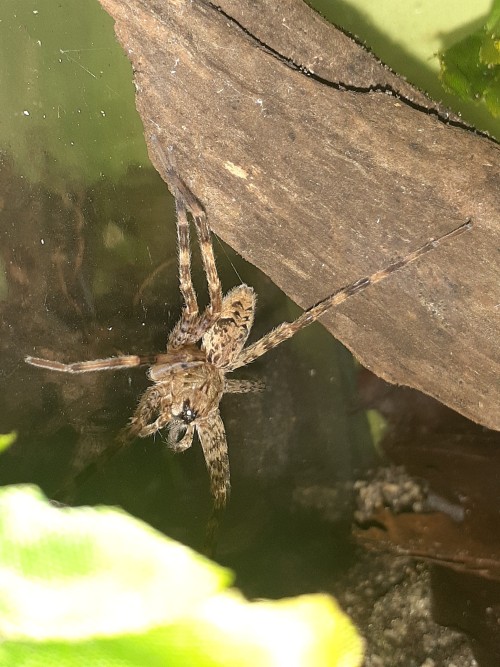

Fel (Tigrosa Georgicola)

Baby millipedes (Narceus americanus)
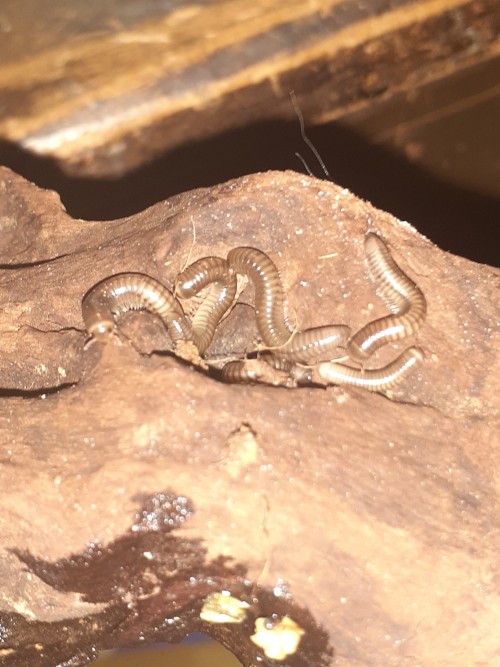
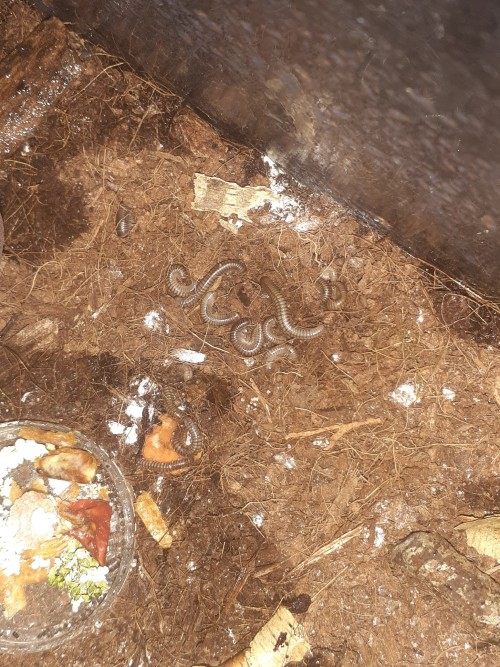
Snail

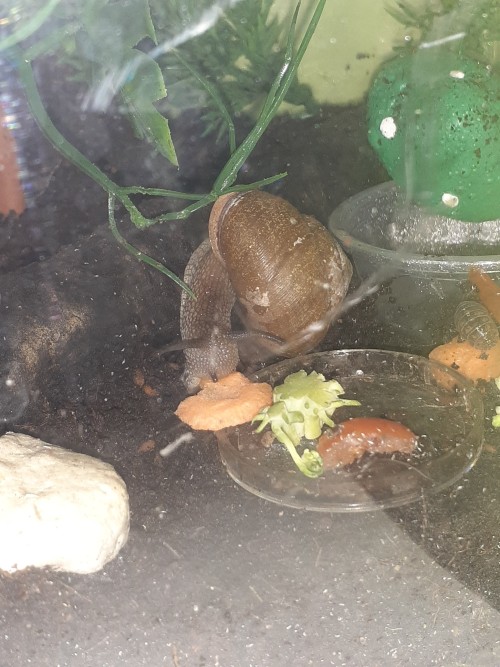
Madagascar hissing roaches


-
 gthostz liked this · 1 year ago
gthostz liked this · 1 year ago -
 spider-farmer liked this · 1 year ago
spider-farmer liked this · 1 year ago
More Posts from Shrivveledradish
I've seen people say fishing spiders really don't live long but ive had my fishing spider, Pebble, for nearly a year and she's still not even mature.




Here are some photos from this morning
I am almost 100% certain she is an immature dark fishing spider (dolomedes tenebrosus) which get very large so she still has a lot of growing to do.
My late dark fishing spider, River, was super large (she is actually my profile picture)


Sometime in the next few months I am going to build a large enclosure for Pebble to continue to grow in.
When I originally brought her home she was much smaller and has moved enclosures several times




(this is how I learned top opening enclosures simply do not work for me when it comes to arboreal spiders)
Originally I was going to put her into one of my spare 6.5 gallons (which are kind of ugly since they are old and scratched up) but I thought it would be good to build an enclosure that is suited more for arboreal spiders that may sit near the top of the enclosure so that is why I decided I would rather build her one over the next few months
I am excited to see Pebble continue to grow and move into her new enclosure once I build it
⋆ ˚。⋆୨୧˚Dytiscidae, Diving Beetles⋆ ˚。⋆୨୧˚
Dytiscid beetles, also known as predaceous diving beetles, are one of the most diverse families of beetles that occupy freshwater habitats. Due to their diversity, they can live anywhere from a stream to a puddle in your backyard. As their name suggests, predaceous diving beetles are known to be voracious predators in their larval stage and, as adults, continue to feed on readily available prey in addition to scavenging. Dytiscid beetle larvae and adults are highly variable in terms of size, head capsule shape, respiration type, and even their tarsal segments. As larvae, they will respire through transcuticular respiration (breathing through the body wall), respiration of atmospheric oxygen via elongated spiracles terminating at the end of the abdomen (Fig. 1), and in one genus, Coptotomus, larvae will have lateral gills on their abdominal segments.

Fig. 1 Dytiscid larva’s spiracles making contact with atmospheric oxygen.
Larvae develop in the water for approximately a few weeks to a few months. Their development time, as with most macroinvertebrates, depends on temperature, food availability, etc. Insects in cooler water will take a longer time to mature, usually growing larger than those that develop quicker in warmer water. Larvae have voracious appetites and will eagerly feed on any small animals available; they have been known to prey on small fish, tadpoles, mollusks, and other aquatic macroinvertebrates. Many adaptations allow them to be such successful hunters such as swimming setae on the tibia (which aids in swimming efficiency) and strong chewing mandibles. When larvae are fully developed, they will exit the water and pupate on the shoreline in a small “nest.” (Fig. 2)

Fig. 2 Larva in a nest on the stream bank, ready to begin pupation.
Following pupation, adults will return to the water to feed and reproduce. They can fly for short distances but often are not accurate or efficient at flying due to the adaptations on their legs for swimming. As adults, they use oxygen stores to breathe whilst underwater. The two primary places they hold oxygen are under their plastron (if present) or under their elytra (Fig. 3). The plastron is an area usually on the ventral (bottom) side, and it has specialized hairs and other structures that allow the beetle to trap a bubble of atmospheric air. The air bubble makes direct contact with a spiracle which allows them to breathe. The air bubbles only last so long, and the beetles must resurface occasionally to replenish their air storage. According to some sources, researchers believe that beetles possessing a plastron often experience degeneration of their flight muscles due to the use of the plastron (and the underuse of their wings).
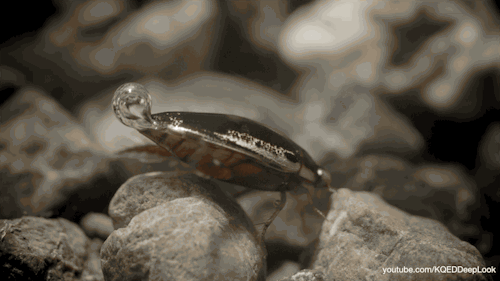
Fig. 3 Adult using subelytral air store.
Many male adult diving beetles will have adaptations that aid in mating. The most common being modified forelegs. Beetles with this adaptation have modified tarsal segments on their forelegs; the modified segment has numerous types of setae (hairs) and suction cups (Fig. 4) that allow them to grip the elytra of females during mating. The ability of insects to develop such intricate, specialized structures is what makes them part of the most diverse group of animals on the planet.

Fig. 4 Tarsal segment of male dytiscid modified into suction cup.
The Great Diving Beetle
The Great Diving Beetle, Dytiscus marginalis, is one of the most commonly recognized beetles in Dytiscidae. Despite the name, this species is not the largest in Dytiscidae, but it does grow up to lengths of 1-1.5 inches (30ish mm). Dytiscus marginalis is native to much of Asia and some of Europe, but is now widely distributed across the UK, Wales, continental Europe, and Asia. As larvae, they can reach lengths of up to double their size as adults. Like most beetles, they prefer slow-moving freshwater in ponds, streams, or ephemeral pools. Adults and larvae both have large appetites and will eagerly consume anything large enough to fit into their mandibles. Their diets can range from other insects to fish to snails to small crustaceans (Fig. 5). Adults have beautiful, greenish-brown to black elytra with yellow lines running laterally along the edges of their elytra and thoracic segments. Similar to many insects, the great diving beetle uses moonlight to guide their flight! When ready to lay eggs, the female will deposit her eggs onto the leaf of a submerged plant, and once the eggs hatch, the larvae begin the cycle anew.
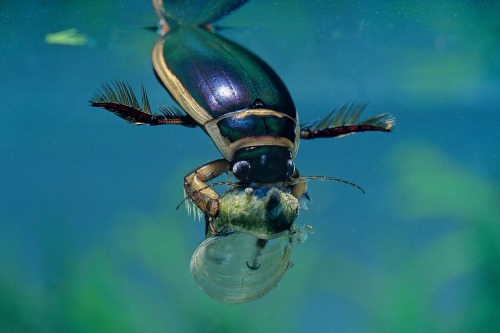
Fig. 5 Dytiscus marginalis adult feeding on mollusk

Fig. 6 Dytiscus marginalis adult male
References:
Great diving beetle (NPS national Capital Region Beetle Species Guide) · inaturalist. iNaturalist. (n.d.). https://www.inaturalist.org/guide_taxa/367412#:~:text=The%20great%20diving%20beetle%2C%20Dytiscus,is%20a%20rather%20sizable%20insect. Merritt, R. W., Cummins, K. W., & Berg, M. B. (2019). An introduction to the aquatic insects of North America (5th ed.). Kendall Hunt Publishing Company.
Just a little note: I hope this is enjoyable and easy to consume! I apologize it isn't super silly, but hey, maybe that's what you wanted. Also pls don't be mean to me, I am an invertebrate taxonomist so I'm not just pulling things out of my ass <3. okay thx byeeeeeee

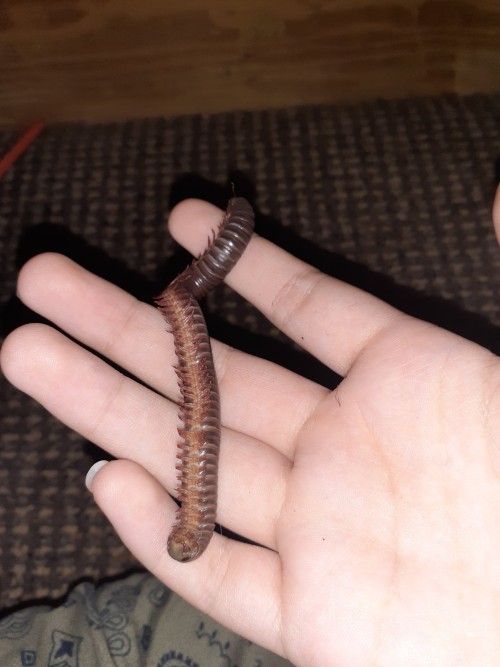
Unfortunately I found that one of my millipedes had drowned in the water dish. I decided to preserve them.
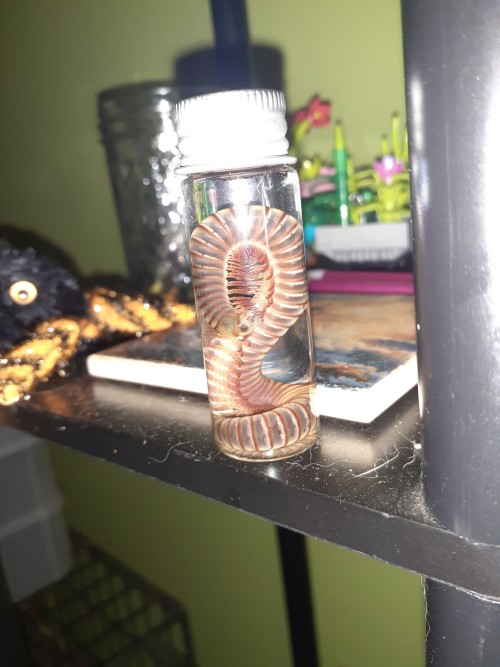

Took out the water dish and am going to get a shallow water dish. They used to have that dish for a while so I didn't think the dish had any hazard to it.
Centipede under the stick
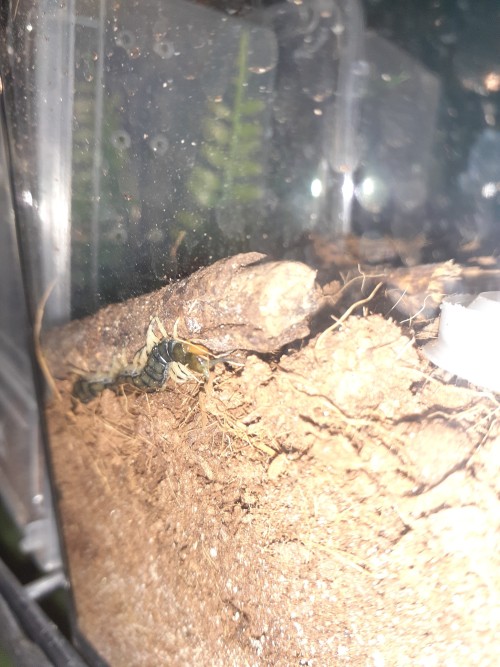
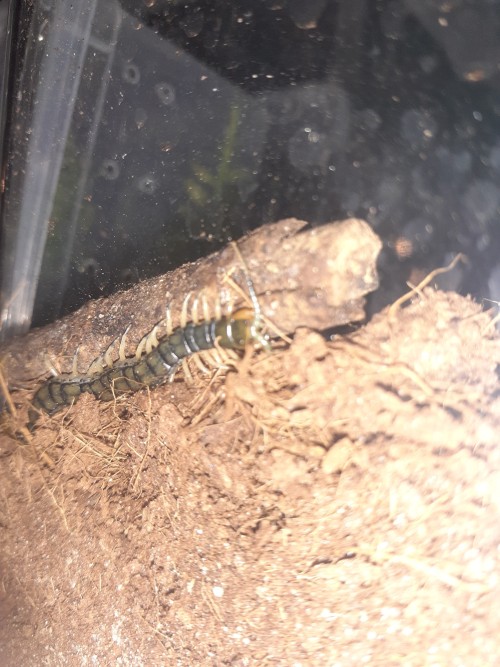
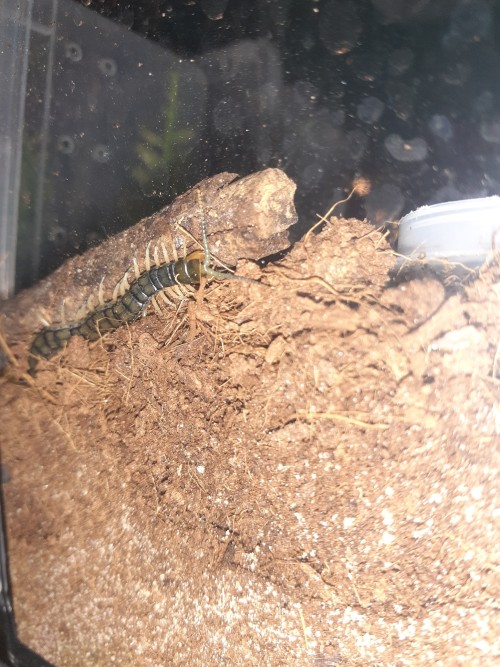
I'm gonna either get her a different enclosure with ventilation on the side or learn how to drill into that eventually, we've just been busy and she isn't showing any signs of mycosis so I'm not too worried atm, but her enclosure will be changed soon.
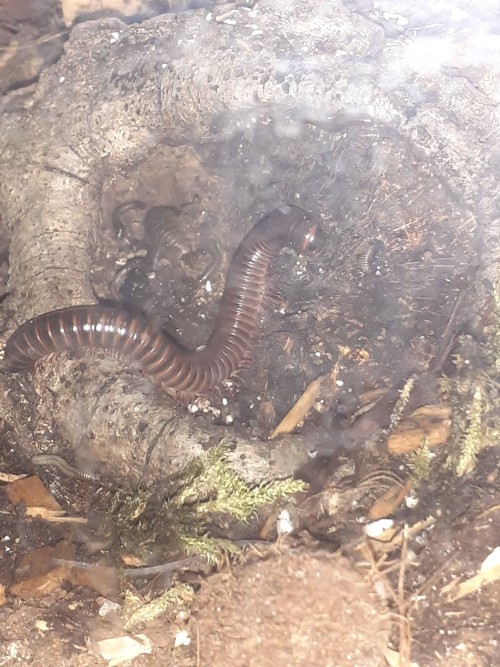

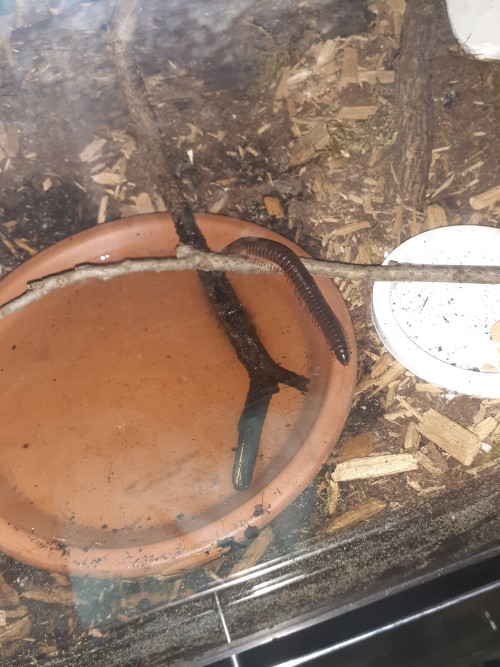
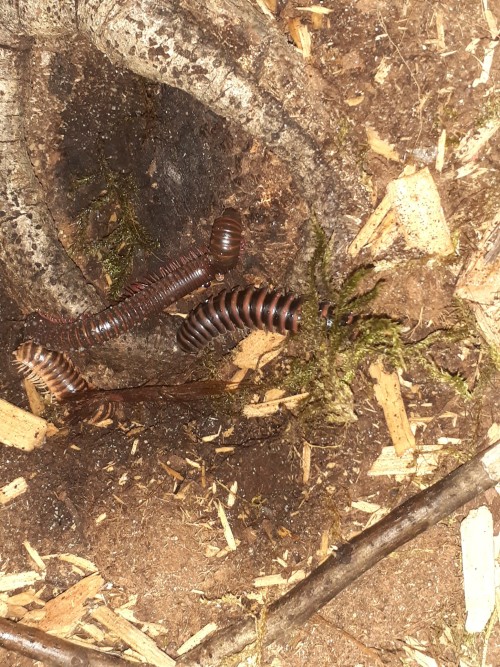



Millipede photodump
